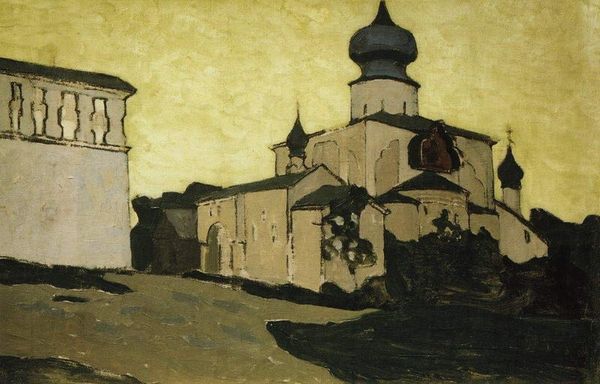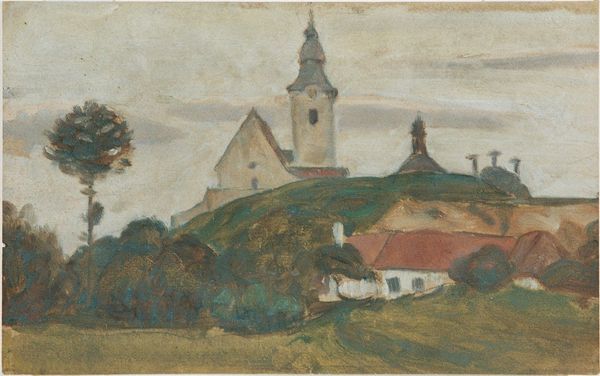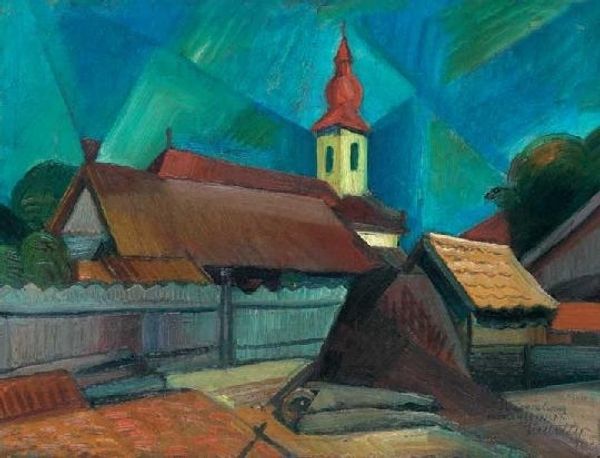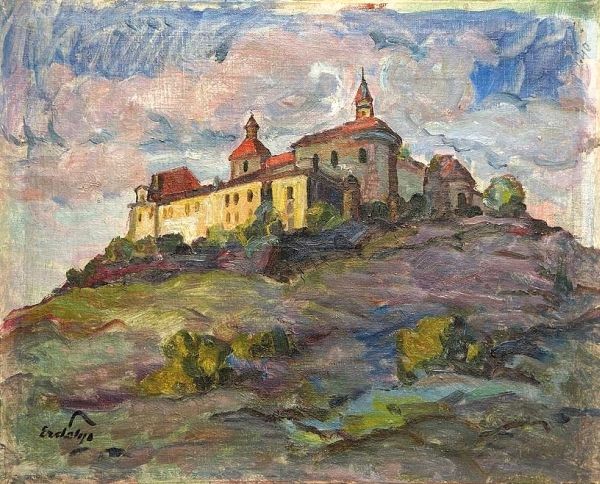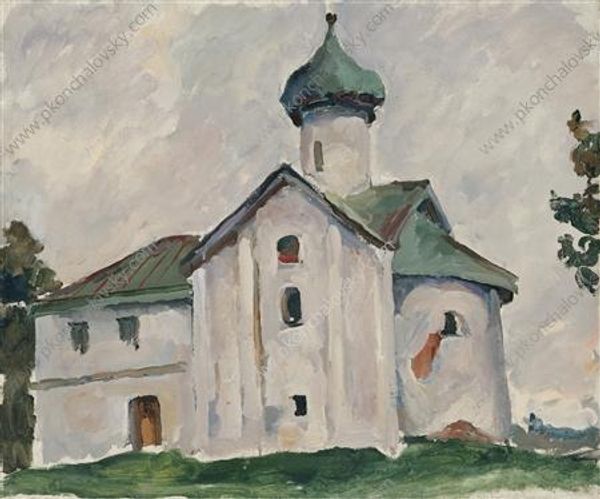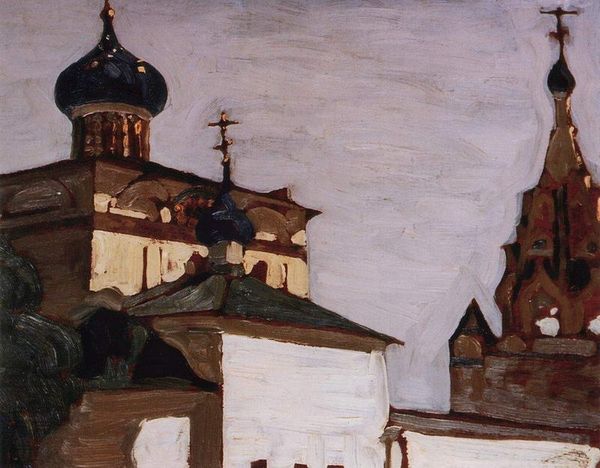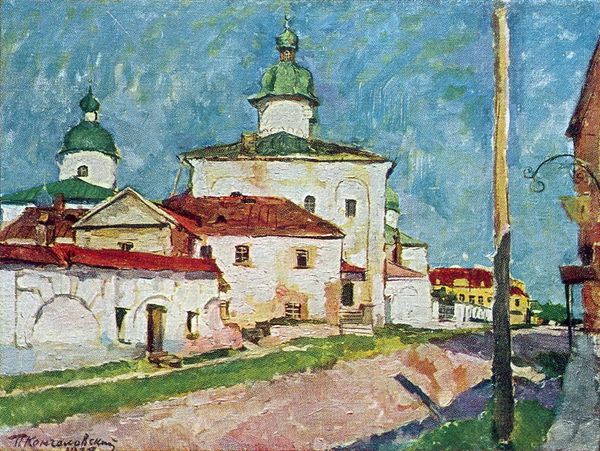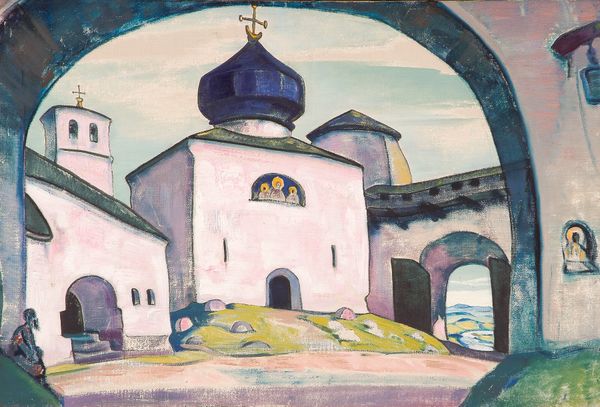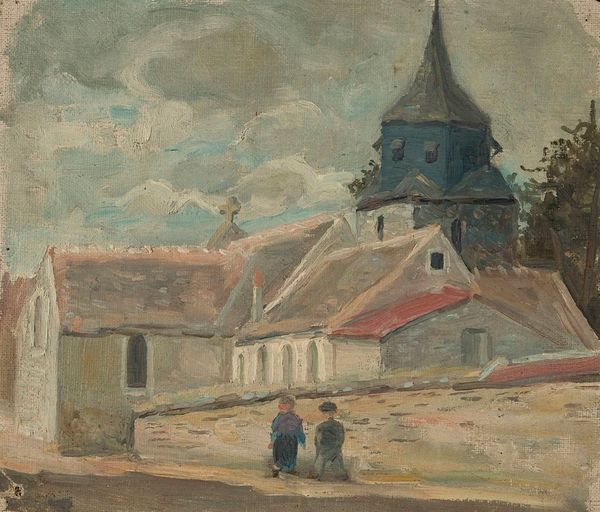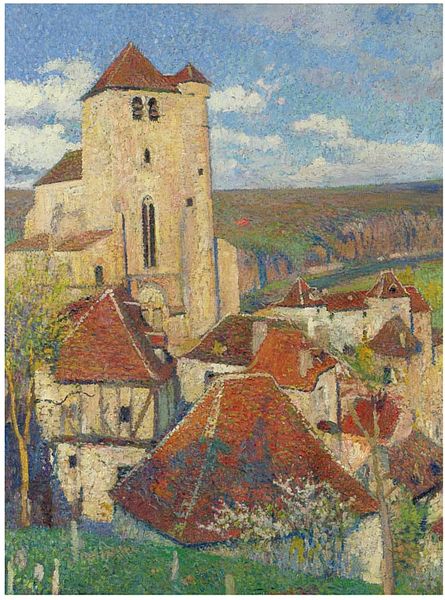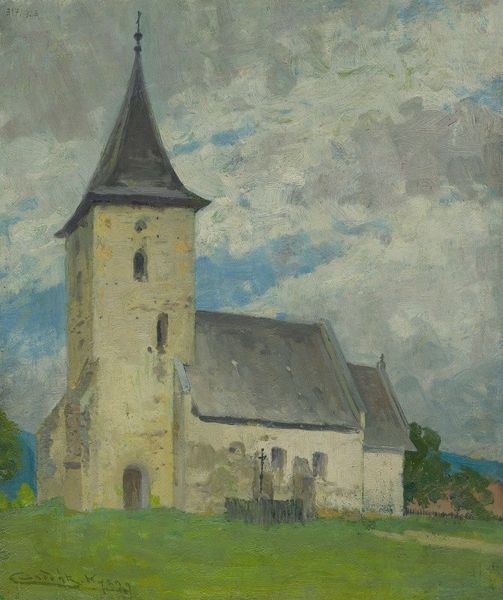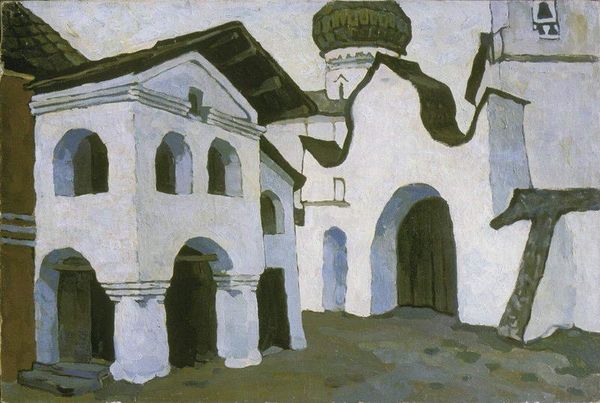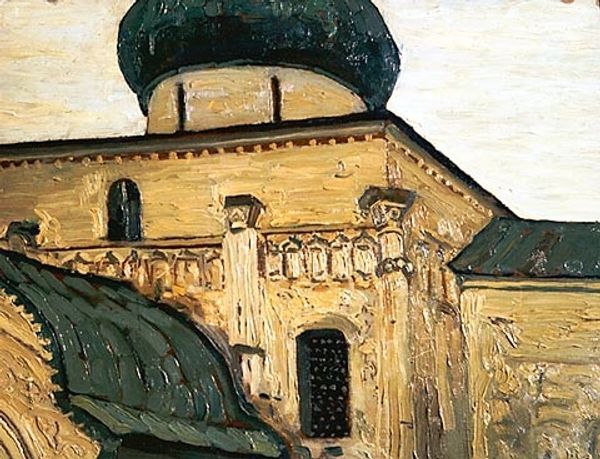
painting, oil-paint, architecture
#
medieval
#
painting
#
oil-paint
#
landscape
#
oil painting
#
arch
#
russian-avant-garde
#
cityscape
#
watercolor
#
architecture
Copyright: Public domain
Curator: Gazing at Nicholas Roerich’s “Putivl” from 1908, the first thing that hits me is this dreamy, almost ethereal quality. It feels like a scene remembered rather than simply observed. What jumps out at you? Editor: It’s certainly striking how he reduces architecture to these simplified, almost geometric forms. It's like a stage set, all clean lines and soft pastels under that bright sky. Curator: Exactly! Roerich often drew from medieval Russia, seeking a spiritual and cultural rebirth. You see it in his sets and costumes for Diaghilev’s Ballets Russes, and you feel that echo here. The architectural forms speak to the monumental spirit of early Russian cities. Editor: It’s interesting to see that medieval influence being embraced alongside the burgeoning Russian Avant-Garde. "Putivl" feels a bit like stepping into a folk tale. Does the specific history of Putivl feed into this vision at all? Curator: Absolutely. Putivl, now in Ukraine, held deep symbolic importance in Russian history, especially through the epic poem "The Tale of Igor's Campaign," which speaks of valor and unity. Roerich painted many scenes like this. "Guests from Overseas", "City in Construction," they’re all these evocations of a mythic, national past. Editor: It's interesting how Roerich paints these old towns as not really populated by people, or contemporary ones anyhow. Is this idealized nostalgia then, or is he finding something more perennial in the stones themselves? Curator: I see it more as Roerich looking *through* the historical narrative, searching for something transcendent and enduring in the cultural memory. It’s as if he believed that these places held the soul of Russia itself. He often infused Theosophical beliefs into his art. So his landscapes and cityscapes were attempts to visually materialize the past while gesturing towards a spiritual future. Editor: So, in the end, is "Putivl" a historical depiction or a sort of painted aspiration? Curator: Perhaps it's that delicate balance between a longing for the past and a reaching towards the future, captured in these softened edges and luminous skies. Editor: A painted reverie. Makes you wonder what future artists will dream up about our own time.
Comments
No comments
Be the first to comment and join the conversation on the ultimate creative platform.
